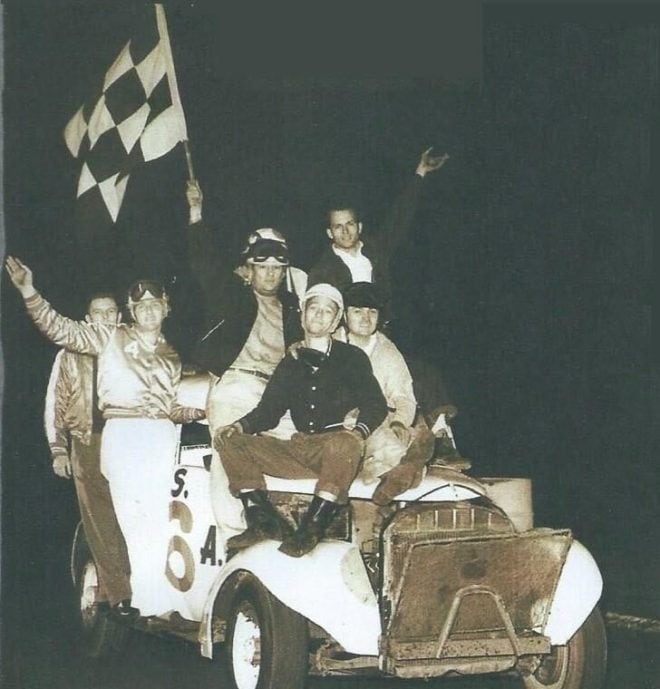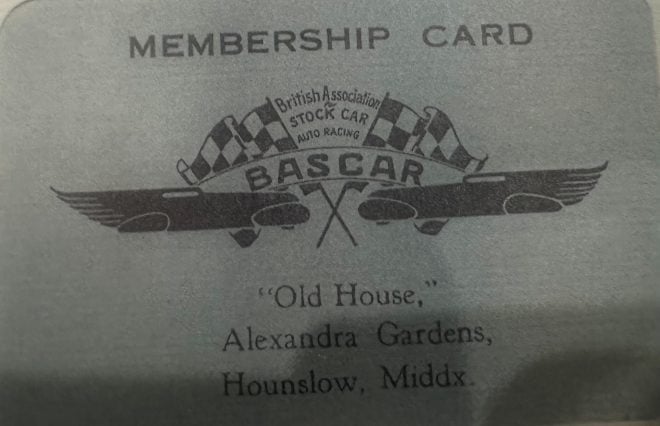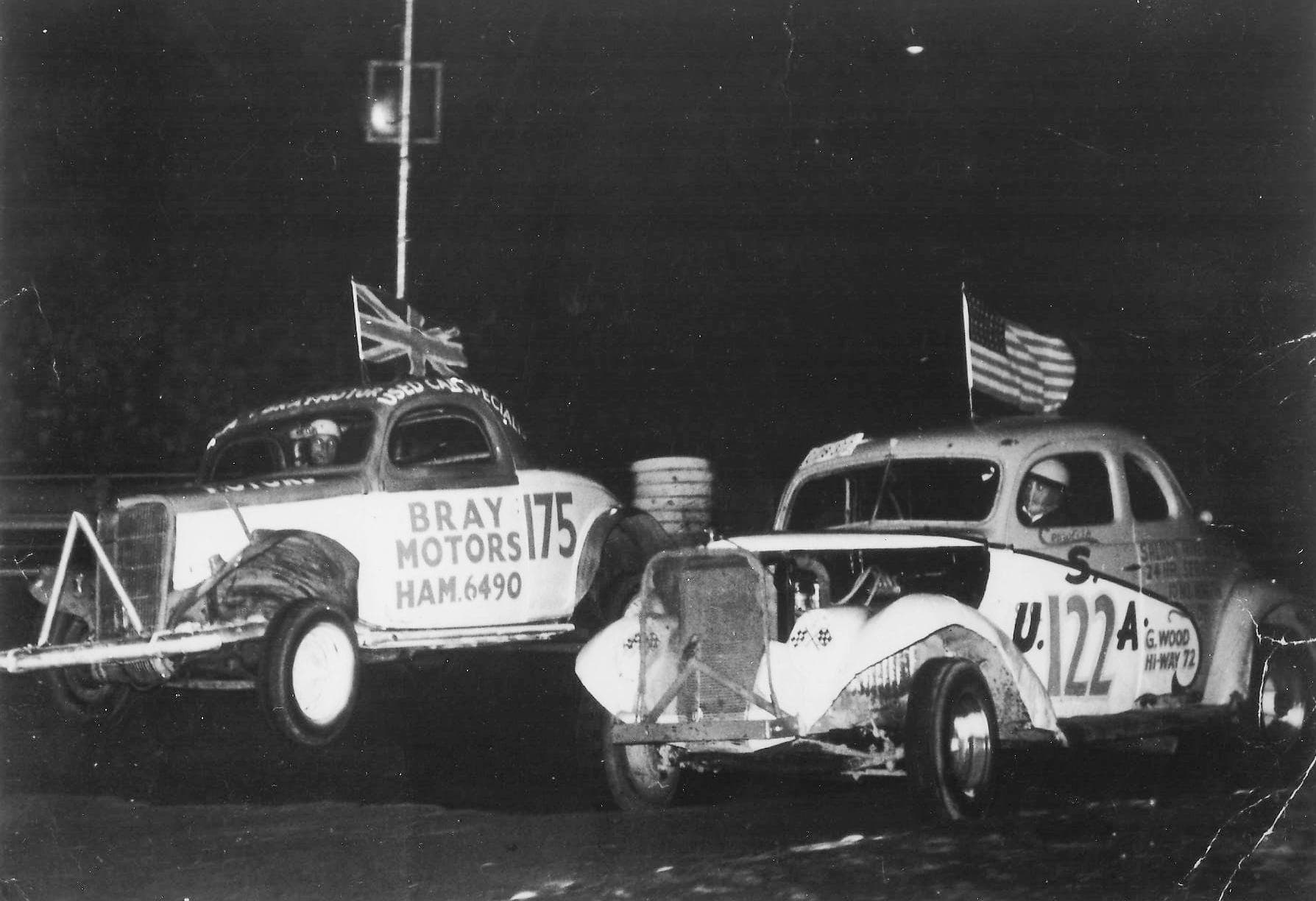Many auto racing fans know the tale of NASCAR running exhibition races in Japan from 1996 to 1998. But fewer know the wild story of when several NASCAR drivers packed their bags for England in 1955, embarking on an adventure called BASCAR.
This wasn’t just a race; it was a daring transatlantic journey in which a team of American stock car drivers competed against British racers on their home turf.
In a recent interview, Danny “Chocolate” Myers, a longtime NASCAR personality who was a crew member on Dale Earnhardt’s Richard Childress Racing NASCAR Cup Series team, relayed the colorful tale of American racers abroad.
How did Myers come to know the story? His father, Bobby Myers, happened to be one of the drivers.
The American team was a colorful crew, full of grit and personality: Myers (who stepped in for the legendary Fireball Roberts), Curtis “Crawfish” Crider, Bobby Schuyler, Bill Irick, Neil “Soapy” Castles, Pete Folse and Possum Jones.
Guiding them were two American promoters, Lester Vanadore and Buddy Davenport, who teamed up with a British showman, Digger Pugh, to make this whole thing happen.
“They are going to go over and get rich,” Myers told Frontstretch. “I know it had to be a huge deal for those guys to get from here [North Carolina] to New York. They went over on the Queen Mary and came back on the Queen Elizabeth.”

What’s truly surprising is that Bill France, the man who built NASCAR and was famously protective of his drivers, actually gave them permission to go. On paper, it was a dream come true: a guaranteed $50 a week (worth nearly $600 today) plus the lion’s share of the prize money. What could possibly go wrong?
As it turned out, everything changed when a smooth-talking, dishonest promoter entered the picture.
Pugh, it seemed, was a master of grand promises, spinning tales of fortune with no intention of delivering. The American drivers, lured by the promise of easy money and international fame, soon found themselves in a financial mess. Week after week, after tearing up the UK ovals, the promised payments simply vanished. Letters home weren’t filled with victory stories but with desperate pleas for money just to get by.
“They were supposed to get $50 a week and half the money they made,” Myers said. “They were packing the house. One of the races, I believe they had 42,000 people there. When the race was over, the promoter told them that they didn’t have that in writing and he wasn’t going to be able to do that.
“According to all the letters I have from my mom that they sent back and forth, it said, ‘you’ve got to send some money home, please. The rent’s due and we are going to have to move. We can’t pay the rent.'”
Yet despite the mounting financial woes, the racing itself was a spectacle. On April 23, 1955, one particular race was even televised by the BBC, bringing the roar of stock cars into British living rooms. And who emerged victorious from that historic broadcast? None other than Bobby Myers, behind the wheel of a 1938 Ford Coupe.
As Digger Pugh’s tricks became undeniable, a new mission took hold among the American drivers: not to win races, but to escape their predicament. Their goal became to outsmart the con man. The unlikely hero of this audacious plan was Crawfish Crider. His engine had blown during a race, rendering his car useless. But Pugh, oblivious to its demise, still saw it as a valuable asset. Crider, with a flash of brilliance, sold his broken-down machine to Pugh. That payment became the lifeline the American team needed. It was just enough to get them to Liverpool and onto the majestic Queen Elizabeth, their ticket home across the vast Atlantic.
“The only driver that carried a car over was ‘Crawfish’ Crider.” Myers said. “They evidently blew it up, but the promoters, Digger Pugh and his group, did not know that he blew it up and they patched it back together.
“They sold it to Pugh. When he paid him, that gave them enough money to get the hell out. They conned the conman and left and made it to Liverpool and got on the Queen Elizabeth to head home.”

And for an even crazier twist? Pugh had a son who eventually moved to Florida, and in a bizarre echo of his father’s showmanship, started his own circus.
“I love to make sure all of my stories are true,” Myers said. “I did my research and found out Pugh’s son moved to Florida and opened a damn circus in Deland, Fla.
“He told me he would get out of school and hop on the subway and go as fast as he could over there because that’s where they worked on all the racecars. He said he knew my dad well. They would race about two times a week for about six months before they got them home”
The BASCAR adventure of 1955 stands as a remarkable tale of early NASCAR drivers’ daring spirit, as well as a harsh lesson in promises unfulfilled. It’s a piece of history that reminds us that sometimes, the greatest victories aren’t won on the track but in the most unexpected corners of the world.




